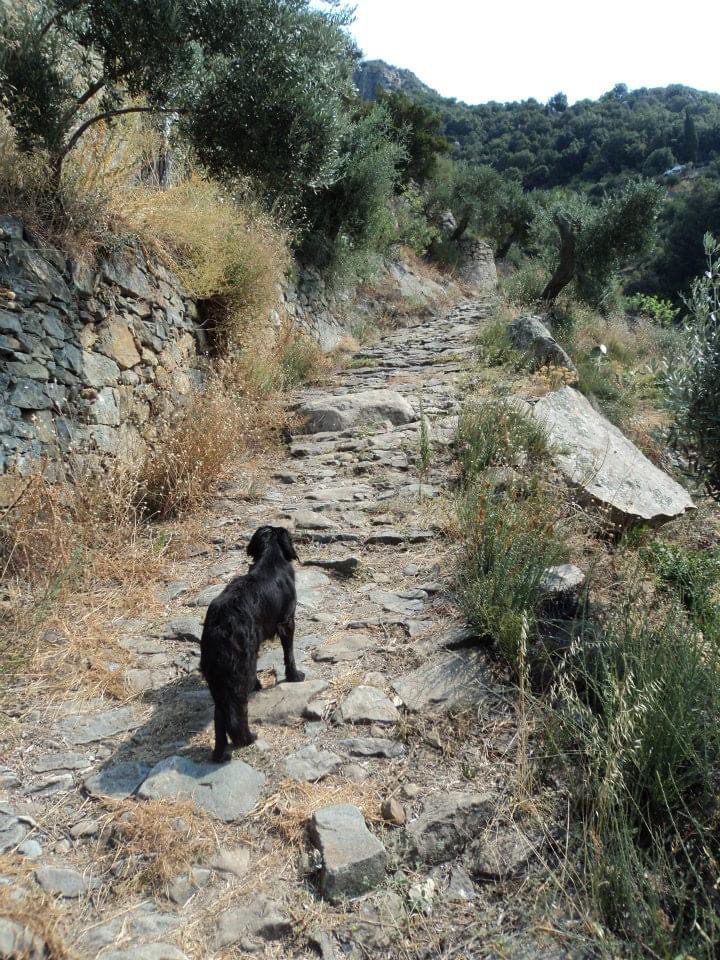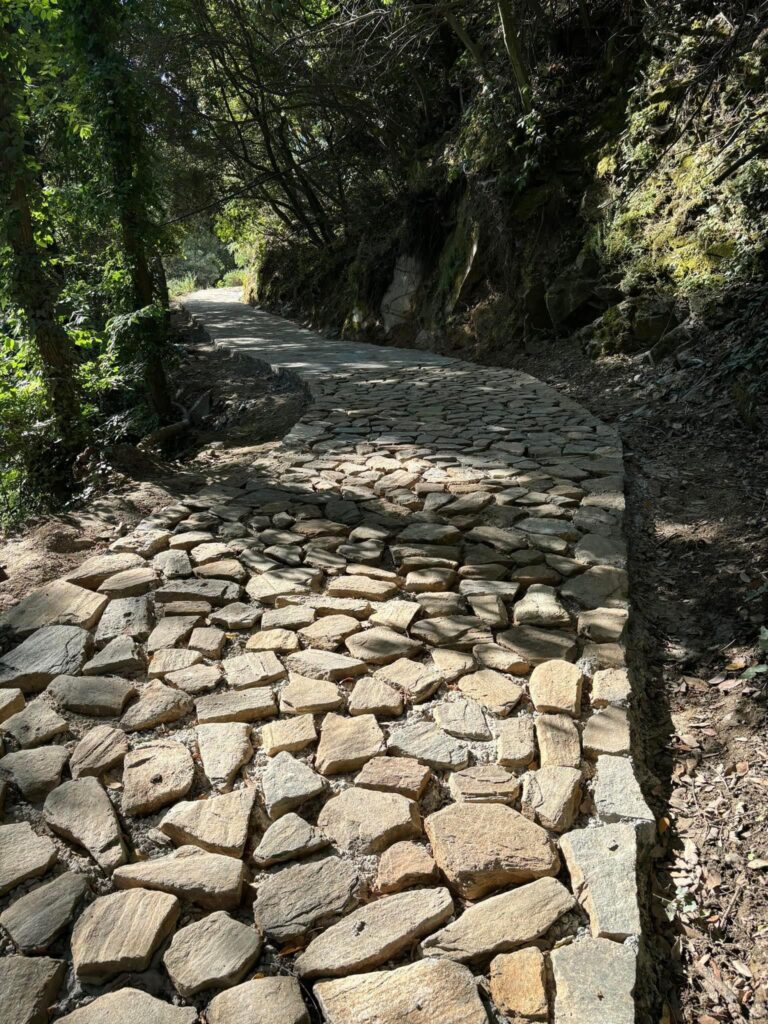Our days had a certain routine. We awoke around 6 AM, as bells were sounding for the monks to start their liturgy. About 6:30 we gathered for a spartan breakfast, heading out shortly after with our “loppers” and saws into the forest. The work, which was challenging, was punctuated by regular breaks, including one about noon for lunch. Around 3 PM we would pack up and return, arriving in time to take showers and join the monks for their vespers service, where Byzantine chant, incense, and cool breezes drifting in through open windows provided a sensual setting for reflecting on the day’s activities. Dinner followed, after which was time for conversation, enjoying the sunset, and writing in our journals.
My fellow team members were a delight. Our team leader was a retired brigadier in the Greek Air Force with a remarkable capacity for leading men. He showed me the proper way to cut through thick branches with my lopper, reducing both the effort required and preserving the sharpness of the blade. Two British men made up the rest of our team, one of whom was my roommate. He and I shared many interests, from botany to history to literature, and when he noticed I was reading a travelogue of Patrick Leigh Fermor, we found we shared a favorite writer too. If your definition of a “fun vacation” is sleeping in a dormitory at a monastery, eating a strict vegetarian diet, and doing heavy manual labor, you are bound to find some kindred spirits! I recall with deep gratitude the ease our team felt with one another during our breaks in the forest, as we sat drenched with sweat in the cool of the shade, listening quietly to the birdsong.
The work was immensely satisfying. Unlike legal work, which tends sometimes to drag and not produce tangible results, the fruits of our labor were visible. We discovered the old kalderimi leading to the mill, but it was much overgrown, likely not used for at least a century or more. At first I doubted our capacity to clear it, but over a couple days of strenuous effort we did. Walking back along a finished portion at the end of the day brought a delight that even the most well-crafted email or legal brief seldom affords. There in a pile were the briars I struggled with midmorning, here the branches I sawed back midday. Now the way was clear.
But I shouldn’t dismiss lightly the legal work, for I saw those fruits as well. Midweek, for example, I visited the cell of Axion Estin, which is being restored in part with funds from MAFA. The meaning of the cell’s name in Greek is “It is truly meet,” and refers to a beloved Orthodox anthem to the Virgin Mary revealed on the site of this cell. The energy and spirit of renewal there are strong. The Fathers are lovingly restoring the dilapidated buildings, and noted that on Athos even new things must be made to “look old.” They are also growing the numbers of their brotherhood. My final night I stayed at one of the larger monasteries on Athos, hoping to make connections there as the monastery has been named as the beneficiary of an American trust. The hope is that MAFA can help facilitate the trust’s gift. Conversations with the monastery’s leadership were encouraging, and we were given a special tour of the monastery’s treasury, which featured art, artifacts, and manuscripts of priceless value that few museums could equal.


